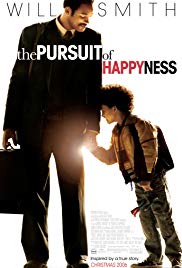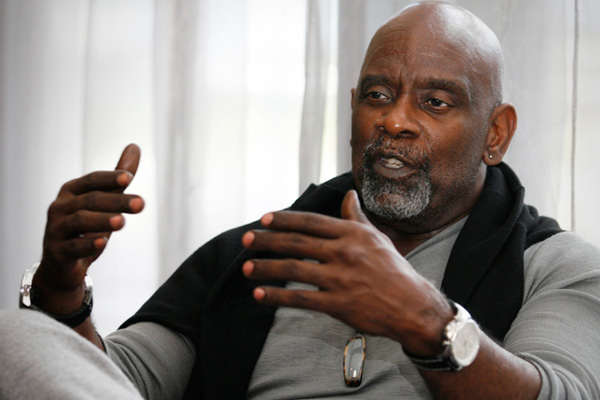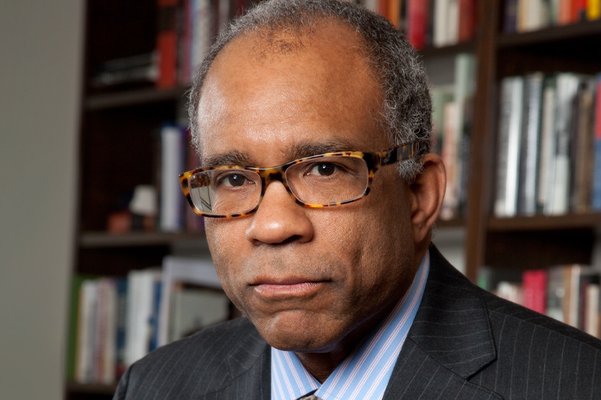1. One critic wrote,
Often, as I watched the movie and the Chris Gardner character was frustrated time and time again, like when he got the parking ticket for his supervisor’s car, or when he couldn’t sell a bone density scanner, or when the man at the football game said that Chris was too inexperienced to get his pension fund business, I thought the character would explode. (I would have had trouble keeping my cool in those situations.) The actor allowed you to see the character mastering his frustration and anger to respond to the disappointment in a smiling and gracious manner. He kept his cool and didn’t burn his bridges.
But there were times when the character of Mr. Gardner, as shown in the movie, did lose his cool and got aggressive with people. What do you think about the ability of this character to keep his cool and be gracious in the face of extreme disappointment and frustration? When did he express his frustration and become angry with people? Does this tell you anything about people in general? But there were times when the character of Mr. Gardner, as shown in the movie, did lose his cool and got aggressive with people. What do you think about the ability of this character to keep his cool and be gracious in the face of extreme disappointment and frustration? When did he express his frustration and become angry with people? Does this tell you anything about people in general?
Suggested Response:
There are a couple of good responses. Taking frustration graciously and not burning your bridges is a necessary ability in being a salesperson and in life in general. It tells us that people who are often disappointed, poor people in particular, have to exercise a lot of self-control throughout their lives. It also shows that the character of Mr. Gardner expressed anger and became aggressive at those who were equal to him or lower in the power structure. He generally allowed himself to lose his cool and become aggressive with poor and non-white people. This probably has nothing to do with the real Mr. Gardner, and how he acts, but it does ring true as something that people do.
2. Now that you have read about Mr. Gardner’s life, what do you think is the most remarkable thing that he accomplished? Do you think it was caring for his son and succeeding at being a stockbroker while he was homeless? Or was it something else?
Suggested Response:
There is no one right answer. Possible responses include: (1) caring for his son and succeeding at being a stockbroker while he was homeless; (2) consciously deciding to go “the other way,” i.e., not to be a child abuser like his stepfather; not to be a drunk like his stepfather; not to be a wife beater like his stepfather; and not to abandon his child, like his biological father; (3) surviving the rape with apparently very few scars; (4) keeping J.R., the racist, as a client; or (5) trying to excel in any job that he held.
3. What did you learn from reading about Mr. Gardner?
Suggested Response:
There is no one answer. See the response to the preceding question.
4. Why is Chris Gardner glad that he didn’t kill Freddie Triplett, his abusive step-father?
Suggested Response:
There are two reasons. First, he probably would have been caught and sent to jail. (Remember, as a teenager when Chris did something illegal, he would usually get caught.) Second, killing another person, even with justification, does terrible things to the killer.
FATHER/SON — PARENTING
See Media Literacy Question #3.
5. What did Chris Gardner’s mother contribute to his character?
Suggested Response:
The most important thing was that he felt loved by her. In addition, there was the encouragement that he could do anything he set his mind to and be anything he wanted to be. She gave him practical advice, like looking confident even when he was terrified and she told him about the value of libraries. She encouraged his reading and schoolwork which, as it turned out, was very important to his success. He could never have passed the brokers’ exam if he hadn’t been a good reader.
SURVIVING
See Media Literacy Question #3.
6. What are some of the risks of homelessness?
Suggested Response:
Homeless people often sleep in areas that are not secure and that are not protected from the weather. They are at increased risk of being assaulted or robbed and of becoming ill due to exposure to the elements.
WORK/CAREER
See Media Literacy Question #2 and Media Literacy Question #5.
7. What was Chris Gardner’s attitude toward work?
Suggested Response:
Whenever he had a job he would do his best and ask question after question. He would find the person who was the best at that job and learn what made that person a success.
8. Does Mr. Gardner’s story mean that anybody can become wealthy and that if you don’t, you’re a failure? Should everyone become rich?
Suggested Response:
The truth is that only a very small percentage of people in society can become wealthy. The fact is that what most people want is not to become rich but to have a happy life. Mr. Gardner’s view of this is contained in the last quote in the handout Episodes in the Life of Chris Gardner (What’s Not in the Movie).
ALCOHOL & DRUG ABUSE
9. What was the role of alcohol abuse in Freddie Triplett’s life?
Suggested Response:
According to his stepson, Mr. Triplett was an alcoholic, and when he was drunk he would terrorize and beat his wife and children.
10. Doctors and psychologists tell us that alcoholism is a family disease. Apply that to Mr. Triplett’s family.
Suggested Response:
Everyone in Mr. Triplett’s family suffered from his lack of control when he got drunk. Often, we can see members of a family developing neurotic behaviors to deal with the alcoholic and his or her illness. We don’t know enough about Mr. Triplett’s family to talk about that. We do know that they lived lives in fear and they were beaten. There had to be some residual effects from this. Mr. Gardner, due to his own strong character and his mother’s love and influence, was able to escape most of it.
BREAKING OUT
11. An admirable thing about Mr. Gardner was that he consciously decided that he would not continue the cycle of neglect, alcohol abuse, and violence to which he was subjected as a child. He calls this “going the other way” from the paths taken by his father and his stepfather. Do you know anyone who has done something similar? Can you tell us his or her story?
Suggested Response:
There is no one correct response.
12. Another admirable thing about Mr. Gardner’s life story is that he did something positive in his life that no one expected him to do. Do you know anyone who has done this? Can you tell us their story?
Suggested Response:
There is no one correct response.
SPOUSAL ABUSE/CHILD ABUSE
13. Describe the usual cycle of a wife beater and how Triplett’s treatment of young Chris was different.
Suggested Response:
The normal cycle for a wife beater has three parts. There is a period in which tension mounts, then the attack, and then remorse. The wife beater will promise that it won’t happen again, and he will be on good behavior for a while. But during the period of good behavior the tension mounts again and then the pattern repeats itself. With Chris, Freddie Triplett was verbally abusive all the time, taunting Chris with, “I’m not your daddy. You ain’t got no daddy!”
14. Why do you think Chris’ mother stayed with Triplett?
Suggested Response:
Most battered women stay in abusive relationships due to a mixture of fear, lack of self-esteem, and a feeling of complete helplessness. In addition, Chris thought that Triplett was responsible for his mother going to jail both times. The first time was when she tried to leave Triplett and the second was when she tried to kill him. If this is true, Chris’ mother knew that when she tried to get away from Freddie Triplett or strike back at him, he would find a way to send her to jail. Also, she could not support her children on a maid’s salary. She needed Triplett’s paycheck to feed the kids. (Compare her self-sacrifice to Mr. Gardner’s refusal to sacrifice his own desire to get rich quick to keep his son from homelessness. There are differences. He had a real possibility of finding a way out, while his mother didn’t.)
EDUCATION
15. What is the role of education in this story?
Suggested Response:
If Mr. Gardner had not gotten a good education and had not been encouraged by his mother and teachers to read, he would not have been able to pass the broker’s exam.
AMBITION/MALE ROLE MODEL
16. Do you consider Mr. Gardner to be a male role model? Tell us your reasons, pro and con.
Suggested Response:
There is no one correct answer, but a good answer will mention: 1) his decision to “go the other way” and not to neglect his children (as his father had done) and not beat women and children in an alcoholic rage (as his stepfather had done); 2) the ethical problems with his decision to subject his son to homelessness so that he could become rich faster (see Media Literacy Question #3); and 3) his decision to excel in any job that he held.
17. Mr. Gardner was ambitious, but was he too ambitious?
Suggested Response:
This is another way to raise the ethical issue involved in Mr. Gardner’s decision that his son would be homeless for many months so that Mr. Gardner could become rich faster. See Media Literacy Question #3.







